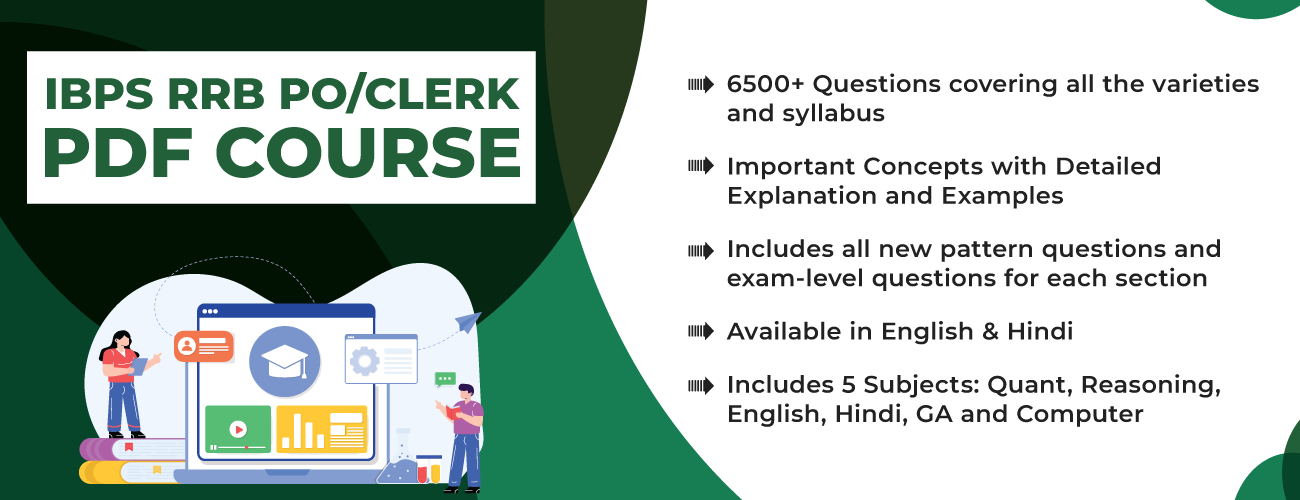When it comes to the RRB Clerk Exam, Data Interpretation (DI) can be a major game-changer. Even if you are good at Quantitative Aptitude, DI can consume a lot of your time if you don’t have a smart strategy to deal with it. Many students lose precious minutes calculating unnecessarily, or they get stuck on complex sets. But you don’t have to worry about it. With the right tricks and constant practice, you can improve your speed and your accuracy. In this article, we have shared tips to boost speed in Data Interpretation in the RRB Clerk Exam.
Tips to Boost Speed in Data Interpretation in RRB Clerk Exam
When you are solving the Data Interpretation questions, you need to be smart as well as quick. To boost your performance, you can keep a few things in mind, likeMaster Basic Calculations: Learn shortcuts for multiplication, division, percentages, and ratios. The faster you calculate, the quicker you interpret data.
Identify Easy Sets First: Not all DI sets are tough. Pick the ones that are straightforward and less calculation-intensive to build momentum
Approximate When Needed: Sometimes, you don’t need exact values. Close estimations work, especially for percentage-based questions.
Avoid Over-Calculation: If an option is clearly way off, there’s no need to fully solve it. Smart elimination saves time.
Stay Calm and Focused: DI can seem scary at first glance, but a calm mind can spot easy tricks faster than a stressed one.
Importance of Mental Calculation in DI
If you are good and accurate at mental calculation, then you have won half the battle. When you mentally calculate percentages like 12.5%, 33.33%, or 66.66%, you cut down massive time that would otherwise go into pen-and-paper work. Practicing mental math daily, even for 15–20 minutes, can increase your calculation speed drastically. And you already know that in an exam like RRB Clerk, every second counts.
Common Mistakes to Avoid in Data Interpretation
Some candidates lose their marks because of some very common blunders, which they could’ve easily avoided. Some common mistakes are jumping into solving without understanding the graph/chart completely, misinterpreting scales on graphs (e.g., missing ‘in thousands’ or ‘lakhs’), spending too much time on one set, even if it’s tough, ignoring units like kg, liters, etc., which can change your final answer, and not verifying the type of question. Some are based on increase/decrease percentage, not just plain values. To know what not to do is as important as knowing what to do.
How to Practice DI Questions for RRB Clerk Exam
The more exposure you have to various DI formats, the faster you’ll get during the real exam. Here’s what your practice should look like:
- Solve at least 3–4 DI sets every day.
- Practice different types: bar graphs, pie charts, line graphs, tables, and mixed data.
- Focus on time-bound practice. Set a timer while solving DIs.
- Analyze your mistakes after every mock or practice test.
- Gradually increase the difficulty level of the sets you practice.

Conclusion
Boosting your speed in Data Interpretation for the RRB Clerk Exam is all about the right balance of smart techniques and consistent practice. Don’t stress if you’re not fast initially. Speed builds up with time and effort. Focus on mastering basic calculations, understanding different DI formats, and practicing regularly under timed conditions. Remember, it’s not about attempting every question but attempting the right ones, smartly and accurately. Stay calm, stay consistent, and trust your preparation.
IBPS RRB Clerk Other Article
| IBPS RRB Clerk Exam Pattern | IBPS RRB Clerk Syllabus |
| IBPS RRB Clerk Salary | IBPS RRB Clerk Cut Off |
| IBPS RRB Clerk Previous Year Paper |
Join our exclusive Telegram group where our experts are ready to answer all your queries, guide you in banking exam preparation, and give personalized tips to boost your success. Get access to real-time solutions, expert advice, and valuable resources to improve your study journey. [Click here to join now!]
FAQs
Practice basic calculation tricks, focus on easy DI sets first, and practice daily with a timer.
Not really! If you practice enough and understand data representation well, DI can be one of your scoring sections.
Ideally, you should aim to complete one DI set within 4–5 minutes to maintain a good pace.
Yes, if a set seems too lengthy or confusing, it’s smarter to skip it and move to easier questions first.
Absolutely! Mocks simulate real exam conditions and help you manage your speed and accuracy better.
- Sign Up on Practicemock for Updated Current Affairs, Free Topic Tests and Free Mini Mocks
- Sign Up Here to Download Free Study Material
Free Mock Tests for the Upcoming Exams
- IBPS PO Free Mock Test
- RBI Grade B Free Mock Test
- IBPS SO Free Mock Test
- NABARD Grade A Free Mock Test
- SSC CGL Free Mock Test
- IBPS Clerk Free Mock Test
- IBPS RRB PO Free Mock Test
- IBPS RRB Clerk Free Mock Test
- RRB NTPC Free Mock Test
- SSC MTS Free Mock Test
- SSC Strenographer Free Mock Test
- GATE Mechanical Free Mock Test
- GATE Civil Free Mock Test
- RRB ALP Free Mock Test
- SSC CPO Free Mock Test
- AFCAT Free Mock Test
- SEBI Grade A Free Mock Test
- IFSCA Grade A Free Mock Test
- RRB JE Free Mock Test
- Free Banking Live Test
- Free SSC Live Test







